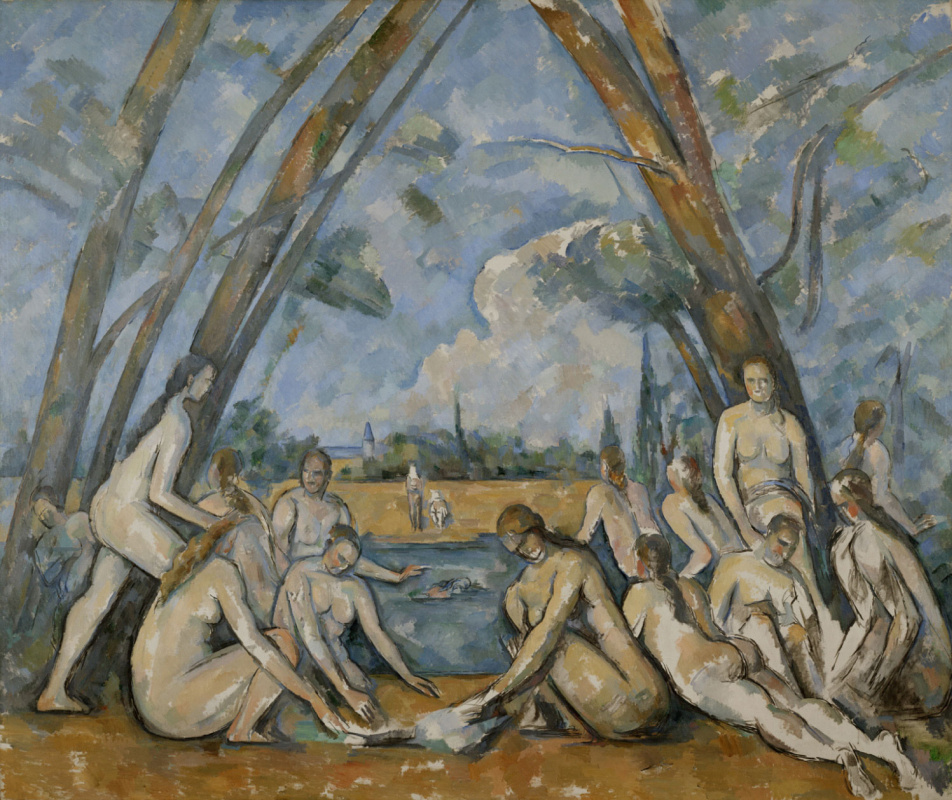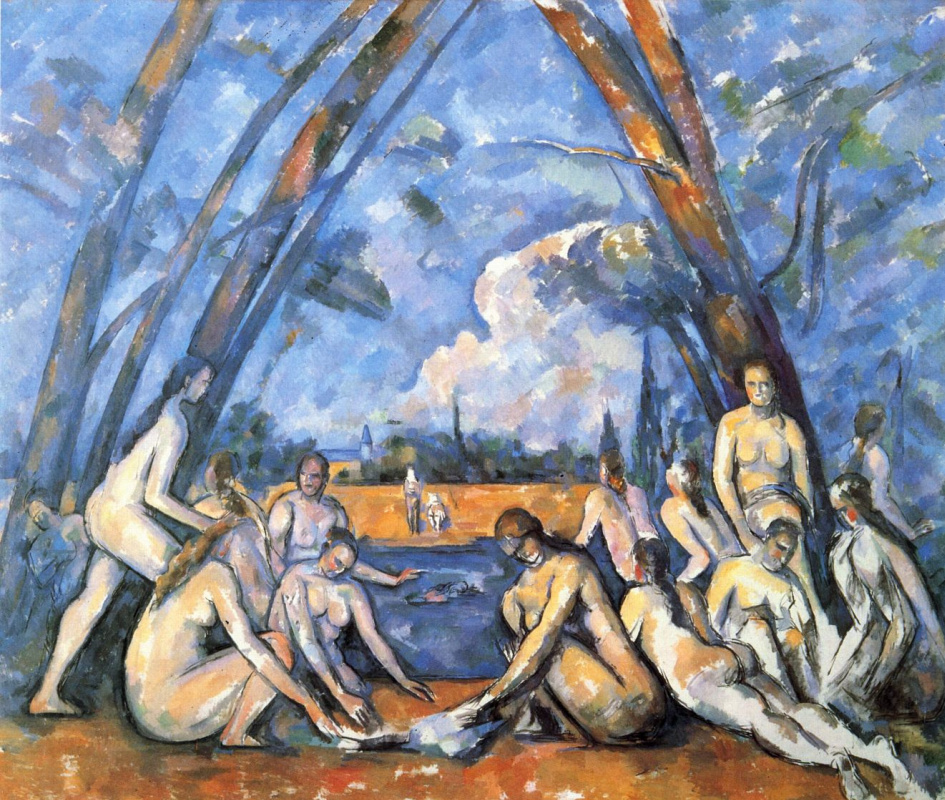log in
Enter site
Login to use Arthive functionality to the maximum
The large bathers
Paul Cezanne • Painting, 1905, 210.5×250.8 cm
Description of the artwork «The large bathers»
Sometimes you feel sorry for an artist if all critics unanimously proclaim him a “herald”, a “forerunner”, and reward him with other ancestral titles for the fact that he or she was the reason why contemporary art became possible. As if the artist worried for modern artistic performances countless “isms” of the 20th century to arise most of all in his life. But when they say that without Cézanne there would be no Matisse or Picasso, this is true: Cézanne, like no one else, probably felt like a part of the art history, he lived inside that history and he depicted the creatures that were born as if not in the real world, but in the pictorial one. Those creatures obeyed not anatomical laws, but the compositional ones: they stretched upward when the rhythm of the picture required it, they filled the necessary volumes and voids with their bodies, they bended and leaned where the artist’s creative hand directed them.
Cézanne’s bathers would comprise a large modern French resort for 40 years of his work on this subject. The first bathing paintings were strongly associated with the youthful sketches that Paul made in his notebooks during the long walks with his friends around the outskirts of his native Aix, and with the sketches of the Louvre antique statues. In his later years in Aix, secluded Cézanne was asked why he did not use nude women sketches for his Bathers. Cézanne replied with a joke: “I’m too old to undress women”. But in fact, he no longer needed sketches — he silently and stubbornly wandered all day in the meadows and inhaled the sultry southern air all day long, He got used to the laws of nature, and having comprehended them, he could safely apply them to all living things. He painted all his Large Bathers for 6 to 7 years, and he did not consider them finished until his death, polishing and growing a special world in each of these paintings. An almost physical sensation of rapid growth is created in them by the diagonals of trees, shimmering, transparent colours and illegible faces of the subjects. And in this sense, Cézanne anticipated not only the cubist experiments of his followers, but also the fantastic plans of 20th century artists to grow a work like a flower or like a tree.
Author: Anna Sidelnikova
Cézanne’s bathers would comprise a large modern French resort for 40 years of his work on this subject. The first bathing paintings were strongly associated with the youthful sketches that Paul made in his notebooks during the long walks with his friends around the outskirts of his native Aix, and with the sketches of the Louvre antique statues. In his later years in Aix, secluded Cézanne was asked why he did not use nude women sketches for his Bathers. Cézanne replied with a joke: “I’m too old to undress women”. But in fact, he no longer needed sketches — he silently and stubbornly wandered all day in the meadows and inhaled the sultry southern air all day long, He got used to the laws of nature, and having comprehended them, he could safely apply them to all living things. He painted all his Large Bathers for 6 to 7 years, and he did not consider them finished until his death, polishing and growing a special world in each of these paintings. An almost physical sensation of rapid growth is created in them by the diagonals of trees, shimmering, transparent colours and illegible faces of the subjects. And in this sense, Cézanne anticipated not only the cubist experiments of his followers, but also the fantastic plans of 20th century artists to grow a work like a flower or like a tree.
Author: Anna Sidelnikova




